The Old World Splendor of Venice
Enamored by its sheer beauty and impressive architecture, the great French conqueror Napoleon once called Venice as the drawing room of Europe.
Granted, he led the invasion and pillage of the old Venetian republic in the 18th century in order to solidify his hold on northern Italy and take advantage of the republic’s maritime prowess, but it would be safe to assume that he too was captivated by the charms and grandeur of this city, lovingly called as one of the jewels of the Adriatic.
After all, the clothes of its people may have drastically changed, and its streets may be littered with hundreds of restaurants and countless souvenir shops, and modern motorboats ply along its canals, but the city of Venice has, in large parts, successfully preserved its beauty and architecture and maintained its old world soul.
Even with engine-run vaporettos plying the lagoon, you can go still go around the city in classic gondolas while being driven/steered by boatmen humming some mellow, almost melancholy Italian tune, perhaps a Vivaldi. Go deeper into the city, past smaller canals, and you will still see buildings built during the Middle Ages and the Renaissance, that perhaps caught the attention of Napoleon and millions of other travelers and tourists who have come to love the city.
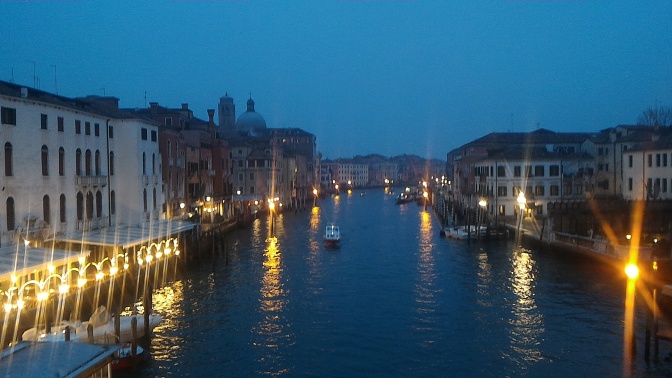
At the very sight of the Grand Canal, you can’t help but hold your breath for a while as you witness sheer perfection that only a timeless city such as Venice, can possess.
I traveled to Venice in the middle of winter, and a light shower was blanketing the city. But it did not mar the beauty of the place, nor dampen my desire to discover its secrets, that for so long, have piqued my curiosity and wanderlust.
Venice is actually a collection of about 117 islands connected by canals and bridges along the Venetian Lagoon. It is located at the head of the Adriatic Sea in the Veneto Region of Northern Italy. The main tourist area is the centro storico (historic center) and there are other large islands around it including Mestre and Marghera. Today, approximately around 350,000 to 400,000 people live in the communes of Venice.
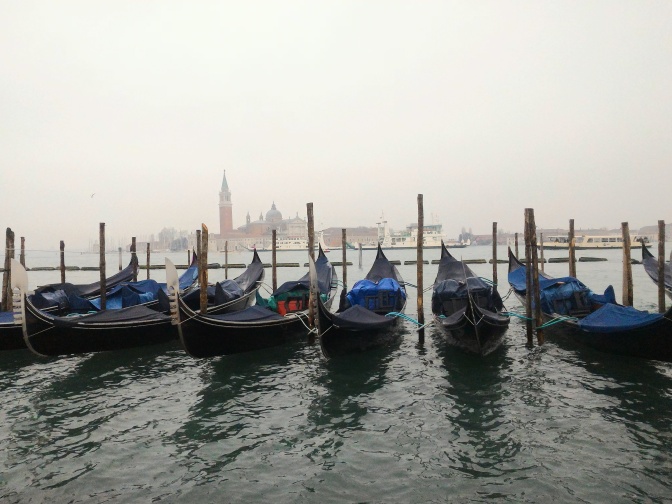
The Republic of Venice dates back to the 5th century, but there were historical accounts of communes living in its islands way before that. Venice has been an important maritime power since the early 7th to 12 centuries, prompting several countries and empires to try to conquer its shores. These include the Visigoths, the Huns, the Lombards, the Byzantium empire, the French and then the Austrians.
As a result, the Venice we see today is a melting pot of different cultures, styles and traditions all woven perfectly into a thriving metropolis that is able to preserve its past while looking at the future.
Walking around the historic center, one cant help but notice remnants of the different cultures that have invaded Venice.
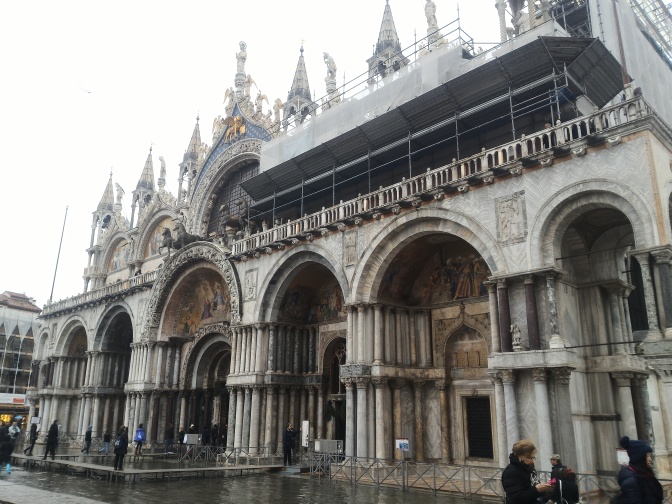
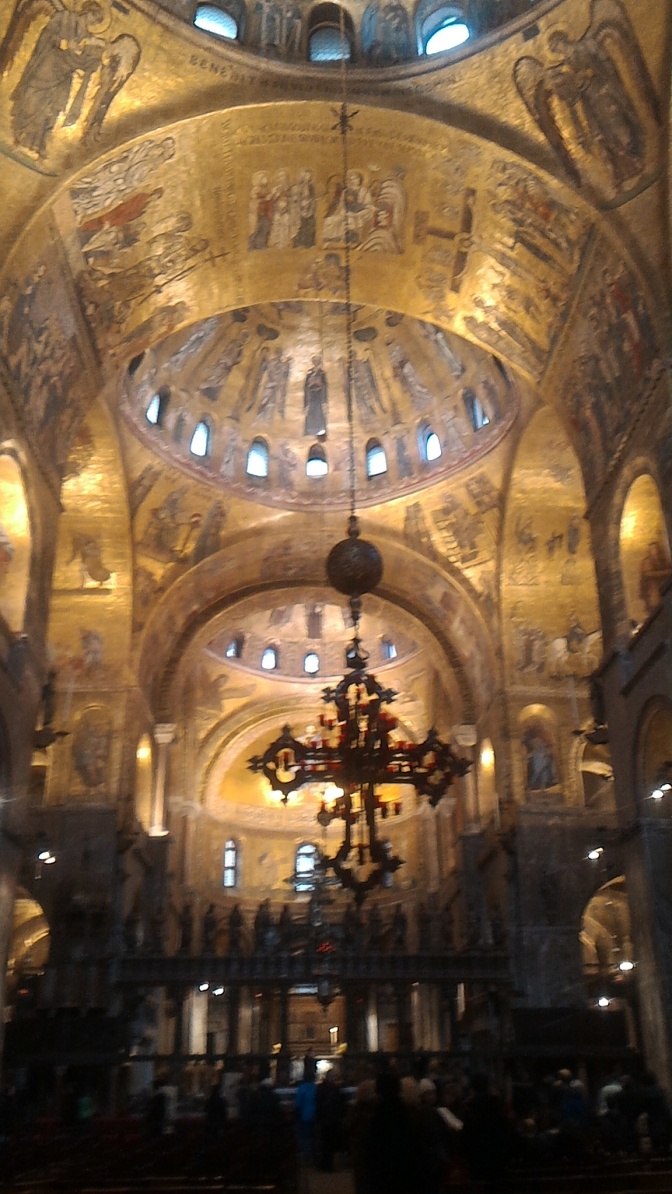
Basilica di San Marco
The awe-inspiring Basilica di San Marco, with its five-niched facade and portals is the most popular structure in the city. This 10th century cathedral is adorned in distinctly Byzantium architecture highlighted by its Greek cross. The mosaics at the church’s facade are simply a taste of the elaborate mosaics that decorate the interiors, some of which were made with dusts of gold. one of the highlights of this church is the quadriga of St. Mark, a bronze statue of four horses that was plundered from Constantinople and later carted off to France, and then ultimately shipped and displayed at the basilica. The church was named as such because it houses the bones of the apostle St. Mark, smuggled by two merchants from Alexandria, Egypt.

Doge’s Palace
Right beside the Basilica di San Marco is the Venetian Gothic-styled Palazzo Ducale or Doge’s Palace. Founded in the 9th century, this structure has been the seat of the Venetian government. This was the home of the Doge or the elected lifetime ruler of Venice. It also houses its civil administration, law courts and other government branch offices. As the most important structures in the city, it is no surprise that is it also one of the most impressive. The building is built of pink marble and white limestone and highlighted by porticos, and balconies. The collonnade of the building is adorned with beasts statues, flowers and other designs.
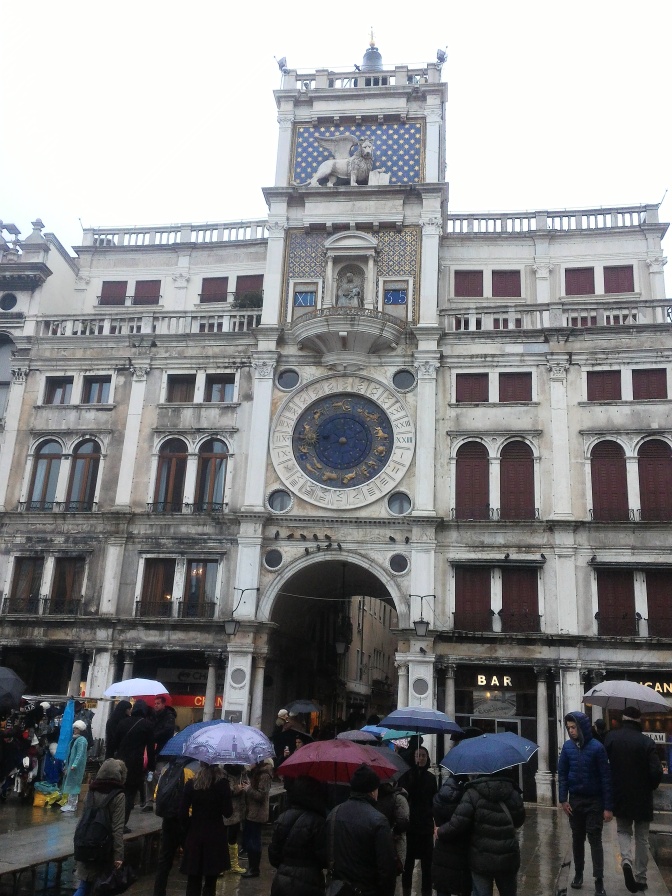
Torre dell’ Orologio
For a lengthy number of years, the Torre dell’ Orologio or the clocktower was obscured from sight by ugly scaffolding due to ongoing renovations but nowdays, its full beauty and ingenuity is on full display for everyone to see. originally built in the late 15th century, its surprising and impressive that is still one of the most accurate clocks in the world, so much so that in 1858, it became the official timekeeper of Venice, to which all other clocks in the city must be set. Aside from time, it also tells the dominant Zodiac and the lunar phases of the moon, quite handy and useful for a city with a long maritime history. it helped seafarers and travelers the best time to set out to sea.
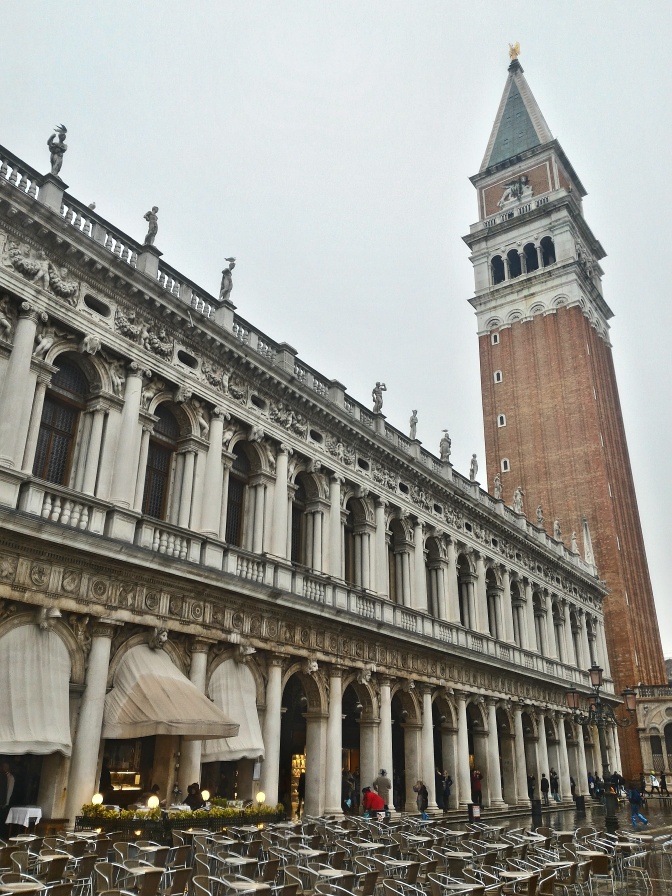
San Marco Campanile
The campanile or bell tower we see today is the product of renovations in the early 16th century. Originally built in the 12th century, it suffered heavy damages on several lightning incidents and attempted arson. The campanile, located at the corner of the Piazetta almost in front of the basilica, is one of the most easily recognizable structures in the city. It guided ships and seafarers during the city’s maritime epoch. The tower is made up of bricks and adorned by a cube with the symbol of a lion (St. Mark’s symbol) and golden weathervane in the shape of an angel, at the very tip.
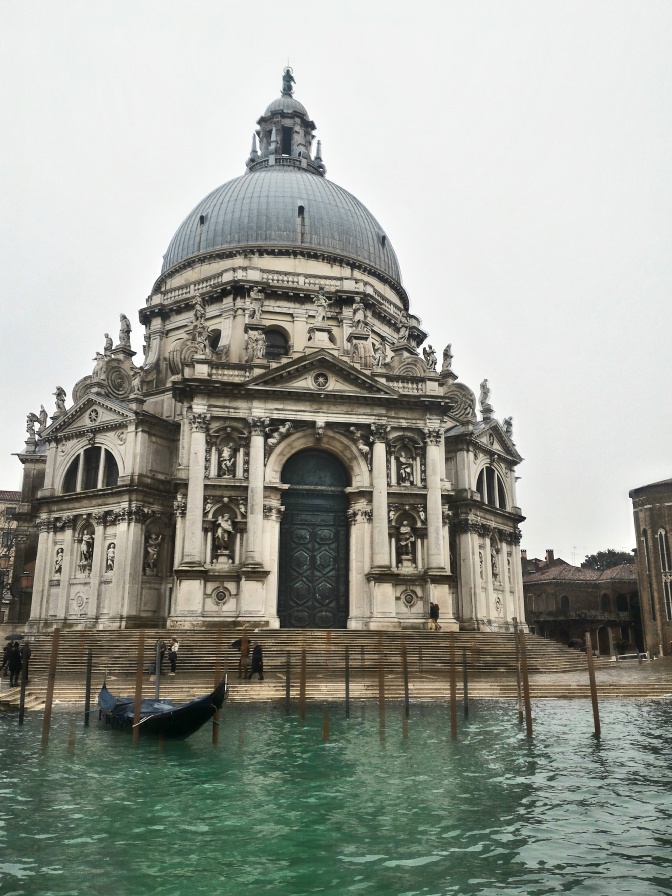
Santa Maria delle Salute
Often times, when we face an adversary so strong that there seemed to be no hope of winning, we turn to the divine for salvation. This is what exactly the people of Venice did in the 17th century when they faced the “Black Death” which killed about a third of the city’s population. The plague earlier hit Venice in the 14th century and killed thousands and on its second attack, the people simply lost hope and turned to the heavens for help. A year after promising to build a statue to the virgin, the plague was overcome and the people of the city rejoiced. They kept their promise and built a stunning, elaborate white church built in classic renaissance style.
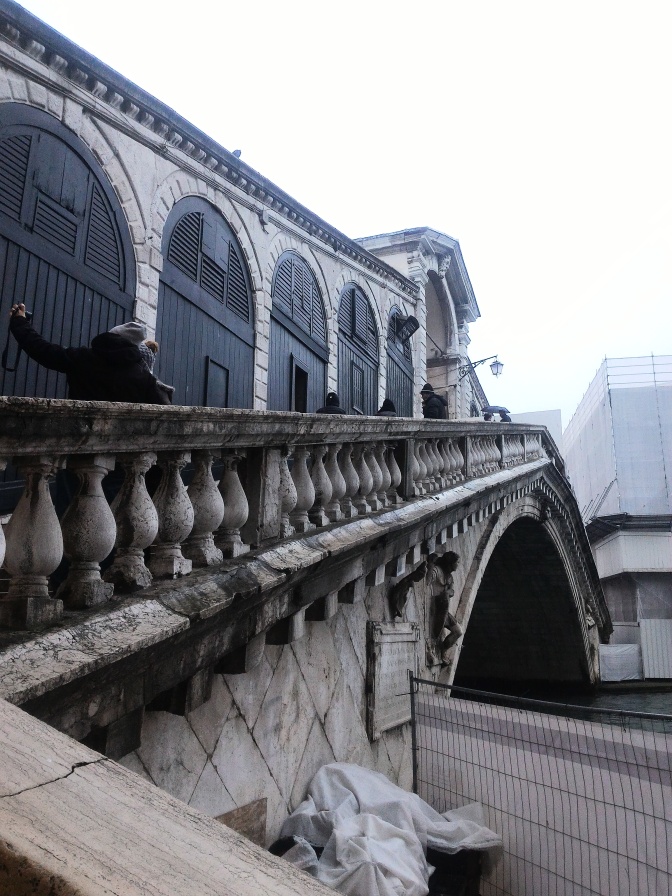
Rialto Bridge
At the height of its maritime power, Venice was a popular commercial center. Here, merchants from around the world exchanged goods such as silk and textiles and metals with foreigners such as the Lombards and the French. this heavy trade prompted the need to connect both banks of the grand canal and the city called for the construction of a great bridge that would replace the original wooden bridge. Since its construction in the late 16th century, the Rialto bridge has played a vital role in strengthening commerce in the city. Now, Venice has several bridges but the the three most famous are the Rialto, Academia and the Scalzi.
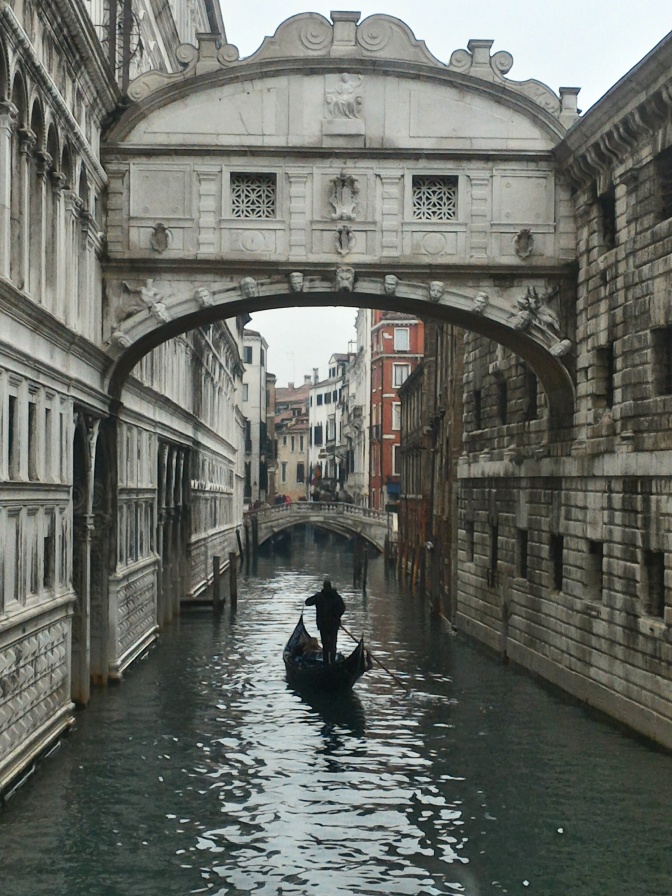
Bridge of Sighs
If you visit Venice, you will see a lot of tourists, couples mostly, walk around the piazza San Marco, and then cross the piazzetta, pass by the two stone towers of the city, and then turn left. At one small section of the bayfront, you will see them huddled together, taking countless selfies. And no one can blame them. They are taking selfies at the famous Bridge of Sighs. Legend has it that if a couple takes a gondola ride and then kiss below the bridge, their love will last forever. This sound really romantic but ironically, this bridge has a rather grim and macabre purpose. The bridge connects the Doge’s Palace and the city prison where criminals are taken and executed. The bridge was named so, as a testament to the countless sighs criminals make upon seeing the city for the very last time before they are beheaded.


















0 comments:
Post a Comment